
[Image source: Flickr]
The Rio Olympics are ON! We’re amazed at the commitment and performance of the athletes. You may know that sporting activities are enhanced by well-chosen nutrition strategies. Did you ever wonder what the top evidence-based nutrition tips are for athletes that help drive their best performance? Earlier this year, Dietitians of Canada published a summary of the latest scientific evidence in sports nutrition.[1] Whether you are a ‘weekend’ athlete or training for challenging events, here are our top tips that could help your performance be at its best.
Top tips for sports nutrition
- Carboydrates are the key fuel for energy and eating them in balanced amounts is important to perform at your best. Studies show that during exercise that lasts longer than one hour eating carbohydrates increase endurance capacity which means you can cycle, run or play hockey longer and not run out of steam.
Dietitians Tip: carbohydrate intake is not necessary if you exercise for less than 45 minutes. However, if you exercise with intensity for more than an hour but less than 2.5 hours in one duration, do consume about 30-60 grams of carbohydrates per hour. Many athletes use sports drinks or gels to top up their carbs during performance. It’s important for athletes to identify a personal plan that best meets their individual needs for energy, hydration and stomach comfort.
- Protein builds muscle and performance. Eating the right amount of protein at the right time has critical implications for athletes. There is strong evidence that among athletes and recreationally active adults, eating protein (examples are egg, milk, casein, whey, lean meat) within the first two hours after exercise will boost the body’s muscle building capacity.
Dietitian’s Tip: to build muscle eat 0.25-0.3 g protein/kg body weight (equivalent to 15-25 g of protein for most athletes) within the first two hours after exercise and as part of meals every three to five hours. If you are interested in protein supplements, whey is best since it’s a fast absorbing high quality protein. Very high protein intakes (ex. more than 40 grams per meal) after exercise will not boost muscle building further.
- Hydration is important because during exercise your body loses extra water through sweat and could become de-hydrated. In sweat your body also loses minerals such as sodium and some potassium, calcium, and magnesium. Depending on the sport or exercise you do, you could lose anywhere from 0.3 to 2.4 L (about 1¼ to 10 cups) of sweat per hour! Dehydration places strain on your body and you could get over-heated tired and hurt your performance. Be sure to top up on fluids when you’re feeling thirsty and look for signs of dehydration such as dizziness, headache and muscle cramps. The ‘pee test’ is a good way to check your hydration before exercise. Aim for urine that is a pale yellow colour.
Dietitian’s Tip: To stay well hydrated plan strategies for your fluid management before, during, and after exercise. For example, drink water throughout the day and before exercise, drink 1-2 cups of fluid. Studies show that during exercise beverages with added flavour or sports drinks (which have added flavour, carbohydrate and electrolytes like sodium and potassium), generally result greater consumption and therefore better maintenance of hydration during intense exercise than plain water.[2]
- Registered Dietitians are the most trusted nutrition experts to help you with your personalized nutrition plan that’s needed for top performance. If you would like help with your eating pattern, a Registered Dietitian can assess your diet and give you recommendations ‘for the appropriate type, amount, and timing of intake of food, fluids, and supplements to promote your optimal health and performance across different scenarios of training and competitive sport.’ You can access the position paper on Nutrition and Athletic Performance at: www.dietitians.ca/sports
[1] Dietitians of Canada (2016) Nutrition for Athletic Performance, www.dietitians.ca/sports
[2] Dietitians of Canada (2014) Sports Hydration http://www.dietitians.ca/Your-Health/Nutrition-A-Z/Sports-Nutrition-(Adult)/Sports-Hydration.aspx


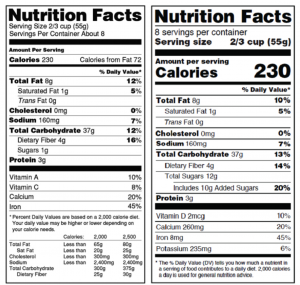

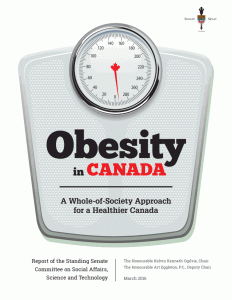


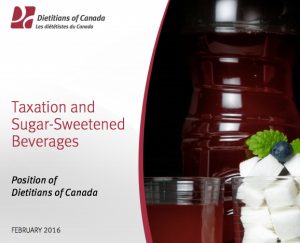
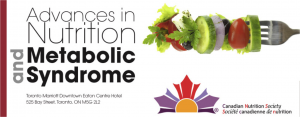






 ICYMI, Jamie Oliver was in Toronto to launch his new TV show on Food Network Canada and his new cookbook Everyday Super Food. We were there at the TV show prescreening and had a chance to listen to Jamie’s thoughts on his latest cookbook.
ICYMI, Jamie Oliver was in Toronto to launch his new TV show on Food Network Canada and his new cookbook Everyday Super Food. We were there at the TV show prescreening and had a chance to listen to Jamie’s thoughts on his latest cookbook.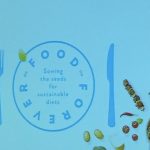
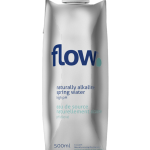 Alkaline water –naturally alkaline water with a high pH. A 500 mL serving contains: 0 calories, 0 g fat, 4 mg sodium 0 g carbohydrates, 0 g protein, 4% DV for calcium. (Top 10 Most Innovative Products for 2015.)
Alkaline water –naturally alkaline water with a high pH. A 500 mL serving contains: 0 calories, 0 g fat, 4 mg sodium 0 g carbohydrates, 0 g protein, 4% DV for calcium. (Top 10 Most Innovative Products for 2015.)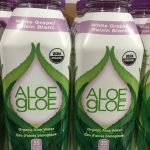 Aloe water – pulp free and sourced in North America. A 450 mL serving contains: 35 calories, o g fat, 0.015 mg sodium, 9 g carbohydrates, 8 g sugars, 0 g protein. (Made with aloe vera inner leaf powder, organic cane sugar, RebA stevia extract.)
Aloe water – pulp free and sourced in North America. A 450 mL serving contains: 35 calories, o g fat, 0.015 mg sodium, 9 g carbohydrates, 8 g sugars, 0 g protein. (Made with aloe vera inner leaf powder, organic cane sugar, RebA stevia extract.) Boxed water – why, because as the package says, “Boxed water is better”. The package tells their story – 78% of the box is composed from trees. No nutrition facts information is shown on the box.
Boxed water – why, because as the package says, “Boxed water is better”. The package tells their story – 78% of the box is composed from trees. No nutrition facts information is shown on the box. Protein2O – a protein enhanced water. A 500 mL serving contains: 70 calories, 0 g fat, 120 mg sodium, 70 mg potassium, 2 g carbohydrates, 0 g sugars, 15 g whey protein. (Made with sucralose.)
Protein2O – a protein enhanced water. A 500 mL serving contains: 70 calories, 0 g fat, 120 mg sodium, 70 mg potassium, 2 g carbohydrates, 0 g sugars, 15 g whey protein. (Made with sucralose.)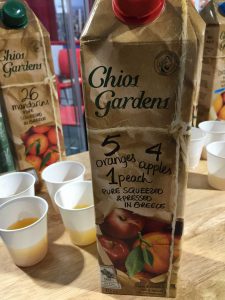
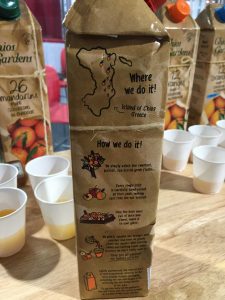
 3. Locally-grown quinoa. Who knew this gluten-free grain could be grown right here in in Ontario? Available in 2016.
3. Locally-grown quinoa. Who knew this gluten-free grain could be grown right here in in Ontario? Available in 2016.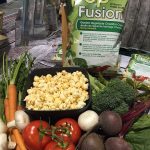 4. Pop Fusion Popcorn. Another local innovation. Popcorn is flavoured with a seasoning blend made from all of the veggies you see in the photo!
4. Pop Fusion Popcorn. Another local innovation. Popcorn is flavoured with a seasoning blend made from all of the veggies you see in the photo!

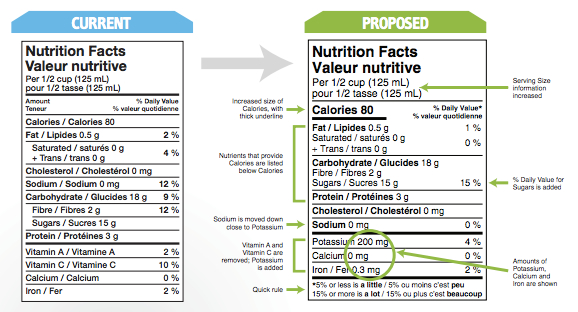
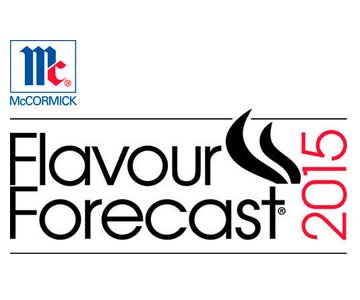

 Camelina Oil – Extracted from the Camelina sativa oilseed, camelina oil is about 90% unsaturated fat, with 39% omega-3 fat and 18% omega-6 fat. The oil boasts light, nutty and earthy notes. With a high smoke point of 475°F, camelina oil is versatile and can be used in salads, dips, dressings and marinades as well as cooking.
Camelina Oil – Extracted from the Camelina sativa oilseed, camelina oil is about 90% unsaturated fat, with 39% omega-3 fat and 18% omega-6 fat. The oil boasts light, nutty and earthy notes. With a high smoke point of 475°F, camelina oil is versatile and can be used in salads, dips, dressings and marinades as well as cooking.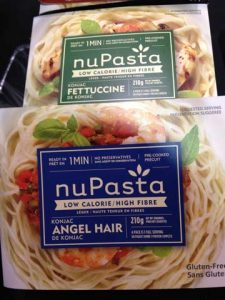 Nu Pasta – This gluten-free pasta is made from the konjac plant. It’s a type of tuber plant, which grows on slopes about 600 to 12,000 m above sea level. The root of the konjac plant is dried and milled into a fine flour which is the main ingredient of the pasta. A 210 g package contains: 25 calories, 1 g fat, 0 mg sodium, 6 g carbohydrates, o g sugar, 6 g fibre, and 1 g sugar. We sampled it in a stir-fry with garlic and pine nuts, which was a nice way to perk up the flavour.
Nu Pasta – This gluten-free pasta is made from the konjac plant. It’s a type of tuber plant, which grows on slopes about 600 to 12,000 m above sea level. The root of the konjac plant is dried and milled into a fine flour which is the main ingredient of the pasta. A 210 g package contains: 25 calories, 1 g fat, 0 mg sodium, 6 g carbohydrates, o g sugar, 6 g fibre, and 1 g sugar. We sampled it in a stir-fry with garlic and pine nuts, which was a nice way to perk up the flavour. Liquid Nitrogen Ice Cream – What do you get when you add milk, cream, sugar and -196°C liquid nitrogen? Ice cream, of course! It’s the coolest and coldest way to make ice cream, and it’s all ready in less than 60 seconds. Liquid nitrogen is simply the harmless nitrogen gas which has been cooled to such a low temperature that it becomes a liquid. We happily sampled the Pumpkin Spice Ice Cream – it was delicious!
Liquid Nitrogen Ice Cream – What do you get when you add milk, cream, sugar and -196°C liquid nitrogen? Ice cream, of course! It’s the coolest and coldest way to make ice cream, and it’s all ready in less than 60 seconds. Liquid nitrogen is simply the harmless nitrogen gas which has been cooled to such a low temperature that it becomes a liquid. We happily sampled the Pumpkin Spice Ice Cream – it was delicious!
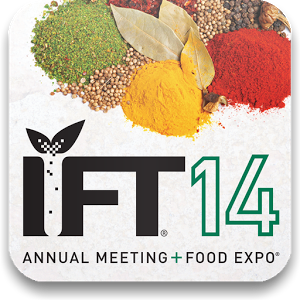 The Institute of Food Technologists (IFT) 2014 Annual Meeting attracted more than 16,400 food professionals from around the world to learn, exchange ideas and share knowledge. One of the highlights of the meeting was IFT’s five key innovation trends expected to have major impact on the food industry. We’ve added our builds for additional insights and context.
The Institute of Food Technologists (IFT) 2014 Annual Meeting attracted more than 16,400 food professionals from around the world to learn, exchange ideas and share knowledge. One of the highlights of the meeting was IFT’s five key innovation trends expected to have major impact on the food industry. We’ve added our builds for additional insights and context. US national menu labelling is expected to come into force this summer. The new regulations aim to ensure calorie labelling on menus and menu boards in chain restaurants, retail food establishments, and vending machines with 20 or more locations. We recently joined a US National Restaurant Association info session where we heard insights about what to expect next.
US national menu labelling is expected to come into force this summer. The new regulations aim to ensure calorie labelling on menus and menu boards in chain restaurants, retail food establishments, and vending machines with 20 or more locations. We recently joined a US National Restaurant Association info session where we heard insights about what to expect next. Canadians are snacking more than ever and their snacking habits will continue to rise in the foreseeable future. According to a recent report by US based Hartman group, 56% of people snacked three or more times a day. This is a significant increase from the 1990’s when only 20% cent of people said they snacked frequently.
Canadians are snacking more than ever and their snacking habits will continue to rise in the foreseeable future. According to a recent report by US based Hartman group, 56% of people snacked three or more times a day. This is a significant increase from the 1990’s when only 20% cent of people said they snacked frequently. What a way to start off the New Year! On January 22, 2014 we attended the Canadian Association of Foodservice Professionals’ (CAFP) “Molecular Gastronomy” event hosted by Humber College*. Chef John Placko demonstrated innovative cuisines where science and culinary arts intersect to create new techniques and dishes including sous vide cooking.
What a way to start off the New Year! On January 22, 2014 we attended the Canadian Association of Foodservice Professionals’ (CAFP) “Molecular Gastronomy” event hosted by Humber College*. Chef John Placko demonstrated innovative cuisines where science and culinary arts intersect to create new techniques and dishes including sous vide cooking. You too have probably eaten sous vide cooked foods in restaurants or while travelling on planes or trains and didn’t even know it! This innovative approach to cooking is used by food service professionals in hospitals, rail and airline companies, and even the military. Sous vide machines are also found in the homes of French cooks, but North American consumers are just starting to show interest as the first home sous-vide machines are expected to come to market. Watch for more innovation in this unique cooking trend.
You too have probably eaten sous vide cooked foods in restaurants or while travelling on planes or trains and didn’t even know it! This innovative approach to cooking is used by food service professionals in hospitals, rail and airline companies, and even the military. Sous vide machines are also found in the homes of French cooks, but North American consumers are just starting to show interest as the first home sous-vide machines are expected to come to market. Watch for more innovation in this unique cooking trend. Hosted by NSF-GFTC, this symposia event featured keynote speaker Amanda Lang, (CBC reporter and author of The Power of Why: how questions and curiosity fuel innovation). Lang defined innovation as when an old idea meets a new idea and something changes. For innovation, Lang urges us to sit at the table with people who think differently than we do (take a cue from her show Lang versus O’Leary), “Different can be irritating, but it’s powerful.” She encouraged us to think with the curiosity of a two-year old, by constantly asking why and why not.
Hosted by NSF-GFTC, this symposia event featured keynote speaker Amanda Lang, (CBC reporter and author of The Power of Why: how questions and curiosity fuel innovation). Lang defined innovation as when an old idea meets a new idea and something changes. For innovation, Lang urges us to sit at the table with people who think differently than we do (take a cue from her show Lang versus O’Leary), “Different can be irritating, but it’s powerful.” She encouraged us to think with the curiosity of a two-year old, by constantly asking why and why not. According to research by the Dairy Farmers of Canada, consumers are most concerned about getting enough vitamins and protein. Dr. Rajavel Elango, Assistant Professor at the University of British Columbia noted that current protein intake recommendations are inadequate. In fact, optimal protein and amino acid intakes could have health benefits.
According to research by the Dairy Farmers of Canada, consumers are most concerned about getting enough vitamins and protein. Dr. Rajavel Elango, Assistant Professor at the University of British Columbia noted that current protein intake recommendations are inadequate. In fact, optimal protein and amino acid intakes could have health benefits.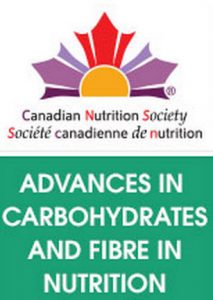 On January 11th, 2014 we attended the one-day CNS conference on Advances in Carbohydrates and Fibre in Nutrition at the Hyatt Regency in Toronto. The event drew over 250 attendees including nutrition professionals, dietitians and students with expert updates on functional fibres, claims in Canada and Glycemic Index of foods.
On January 11th, 2014 we attended the one-day CNS conference on Advances in Carbohydrates and Fibre in Nutrition at the Hyatt Regency in Toronto. The event drew over 250 attendees including nutrition professionals, dietitians and students with expert updates on functional fibres, claims in Canada and Glycemic Index of foods. From protein and probiotics to tea and cooking, we’ve got the scoop on the top 10 hottest trends for 2014.
From protein and probiotics to tea and cooking, we’ve got the scoop on the top 10 hottest trends for 2014. We attended the annual Canadian Digestive Health Foundation Summit for health professionals to get the latest updates on this exiting area of research. There is so much to learn about the human microbiome which is the collection of microbes – bacteria, viruses, and single-cell eukaryotes – that inhabits the human body. Did you know that microbes in your body outnumber your human cells by a ratio of ten to one? Research is mounting on this newly recognized inner body ecosystem of microorganisms that appear to impact much more than just your digestive tract.
We attended the annual Canadian Digestive Health Foundation Summit for health professionals to get the latest updates on this exiting area of research. There is so much to learn about the human microbiome which is the collection of microbes – bacteria, viruses, and single-cell eukaryotes – that inhabits the human body. Did you know that microbes in your body outnumber your human cells by a ratio of ten to one? Research is mounting on this newly recognized inner body ecosystem of microorganisms that appear to impact much more than just your digestive tract.
